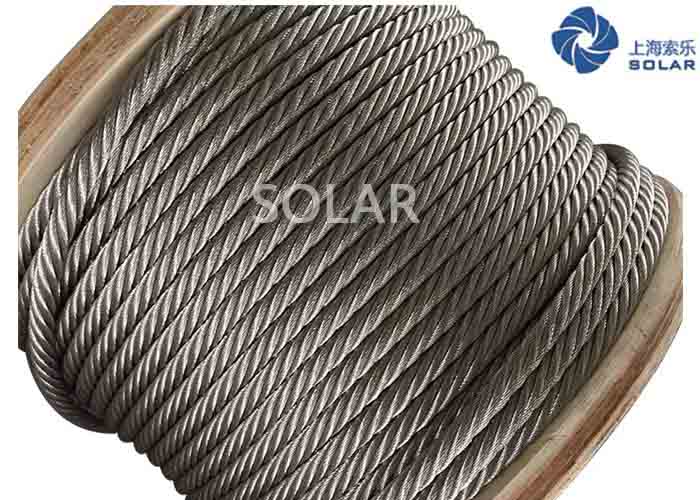Welcome to the official website of Shanghai Solar Steel Wire Rope & Sling Co., Ltd.!
Tel:0086 15623088800 Contact Us|Message 中文
Welcome to the official website of Shanghai Solar Steel Wire Rope & Sling Co., Ltd.!
Tel:0086 15623088800 Contact Us|Message 中文
Home > News Center > Safety Requirements For Wire Rope Connection
Source:Solar|Date: 2020-08-26| Hits
The commonly used connection method is braided noose. The rope sleeve is put on the heart-shaped ring, and then the end is tied tightly with a steel wire, and the strapping length is ≥15d rope (rope diameter), and should not be less than 300mm.
When two steel wire ropes are butted, the length of the knitting method should not be less than 15d rope, and it should not be less than 300mm, and the strength should not be less than 75% of the breaking force of the wire rope.
Another way is wire rope clamp. The number of rope clamps is related to the rope diameter. For rope diameters of 7-16 mm, 3 rope clamps should be used; 4 for 9-27 mm; 5 for 28-37 mm; 6 for 38-45 mm. The distance between the rope clamps shall not be less than 6 times the diameter of the wire rope. When connecting, the rope clamping plate should be at the long end of the wire rope, which is the end of the force. The connection strength should not be less than 85% of the breaking force of the wire rope.

When using taper sleeve casting method to connect, the connection strength should reach the breaking force of the wire rope.
When the aluminum alloy sleeve compression method is used for connection, the connection strength should reach 100% of the breaking force of the wire rope.
In any case, the steel wire rope must have a safety ring of no less than 2 to 3 circumferences on the drum.
In order to avoid knotting and looseness, when taking the rope from the steel wire rope reel, the wooden reel should be supported on the shelf to straighten the rope and then cut as needed.
The maintenance of the wire rope should do the following:
(1) Steel wire ropes should be protected from damage, corrosion, or performance degradation caused by other physical conditions.
(2) When the wire rope is uncoiled, it should be prevented from being knotted or twisted.
(3) When the wire rope is cut, measures should be taken to prevent the strands from spreading.
(4) The wire rope should be kept in a good lubrication state, and all lubricants should meet the rope requirements.
(5) The wire rope should be inspected daily, including the fixed connection and balance of the end, and safety judgments should be made.
2020-08-07How to choose the crane wire rope
2020-08-21The Selection Of Crane Wire Rope
2019-04-17Do you know how to store the tower crane wire rope after you buy it back?
2020-08-19What aspects should be considered when we are going to purchase wire ropes?
2019-04-17Inserting method and plugging instructions for six-strand wire rope
2019-04-17How to choose the specification model of electric hoist wire rope?
Please input Keywords
Confirm